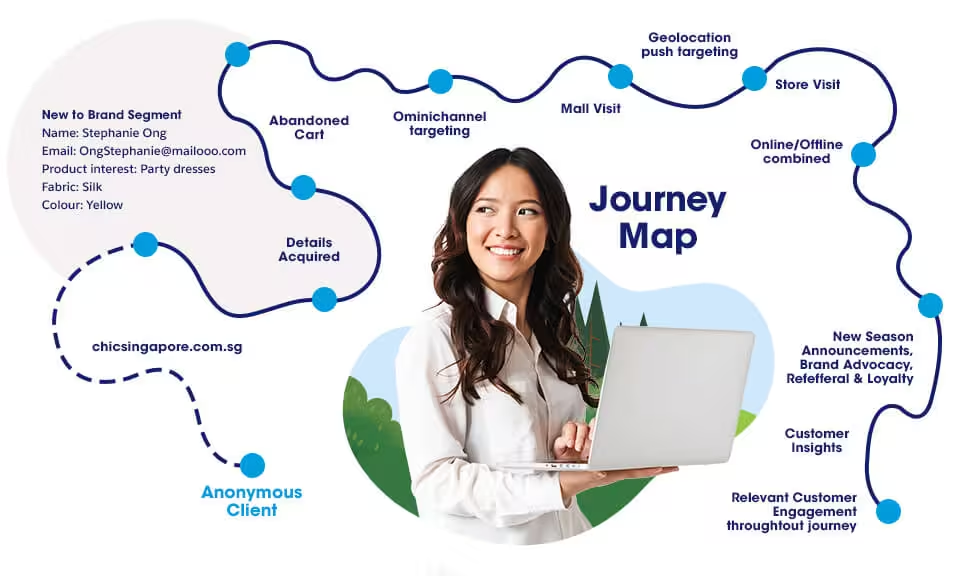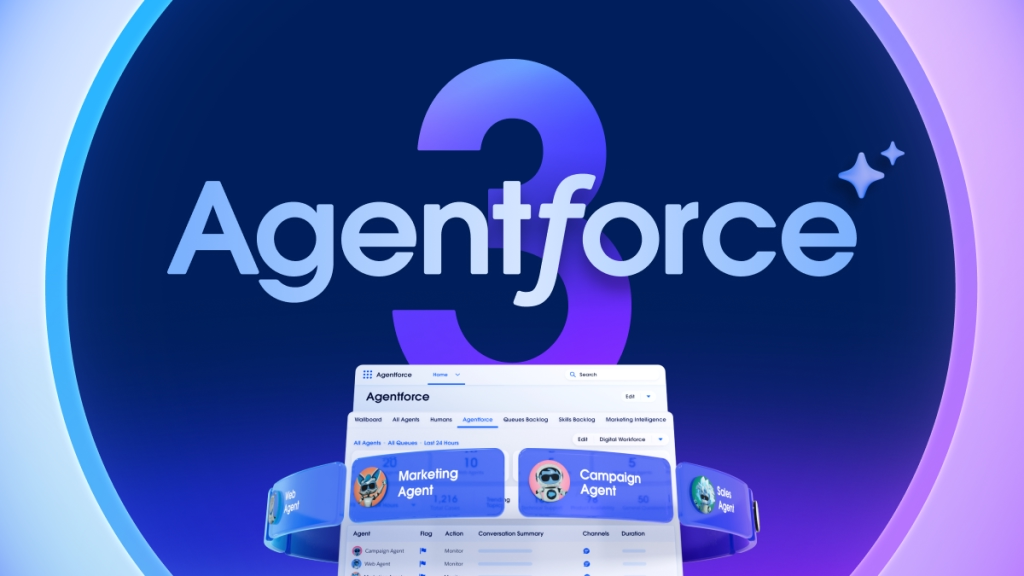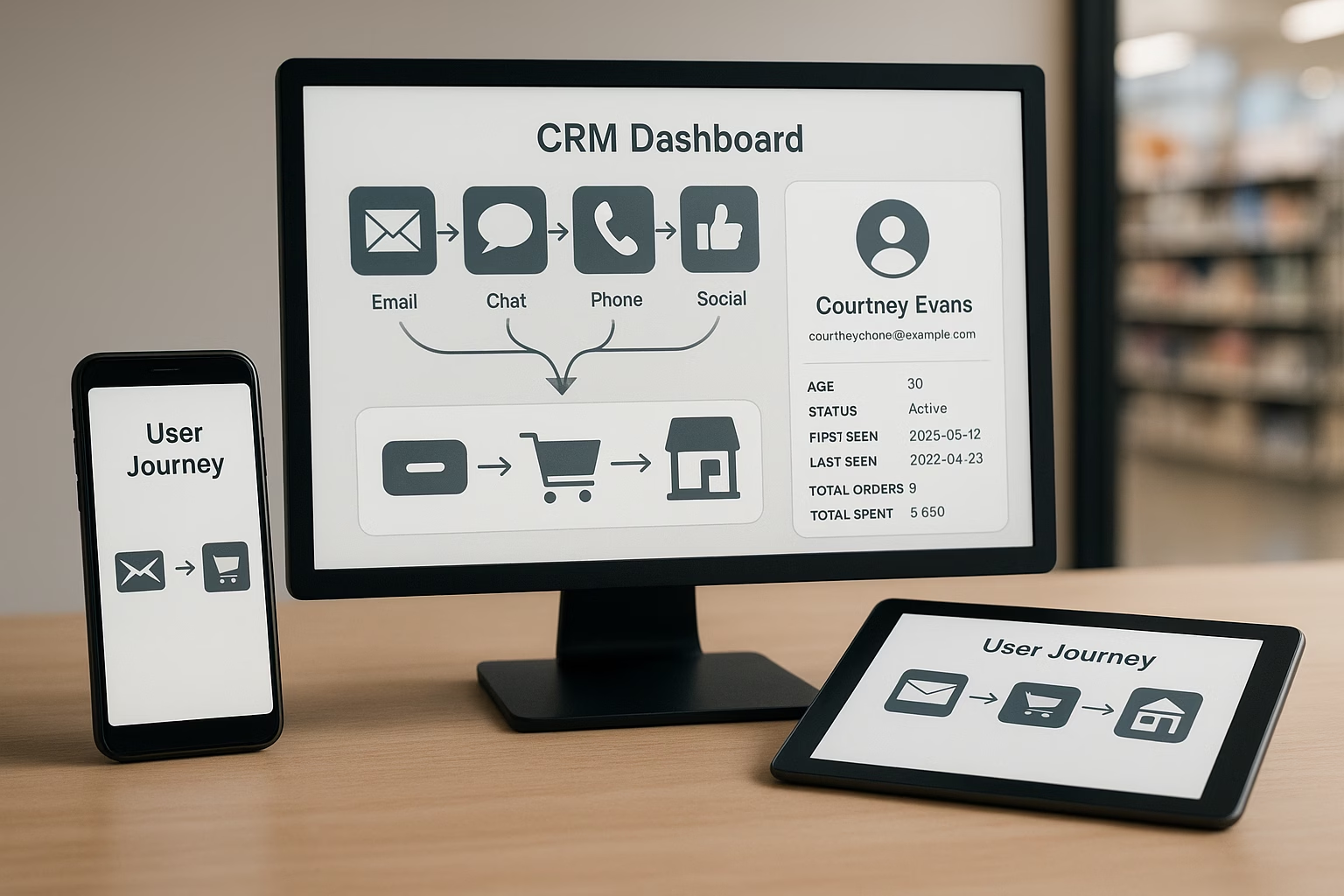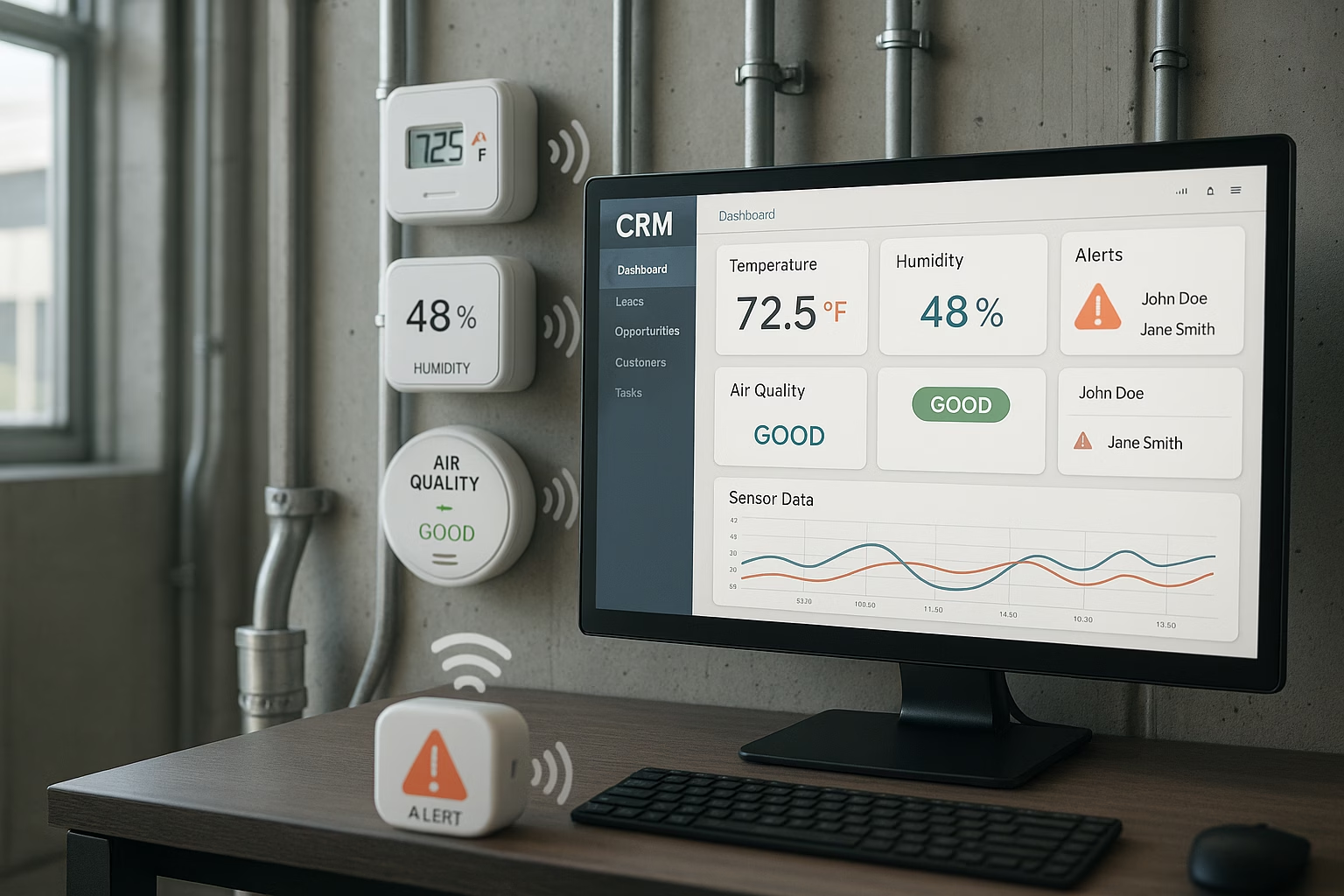By Martin H. Morrissette, Sirocco CMO – Book time with me
The customer journey as we know it has undergone a profound transformation. What was once a straightforward, linear path from awareness to purchase has now evolved into a complex web of interactions across multiple platforms and devices. Customers no longer follow a predictable pattern; instead, they weave their way through a maze of touchpoints, each influencing their perceptions, decisions, and ultimately, their loyalty to a brand. For tech-savvy business leaders like you, mastering the art of customer journey mapping and optimising digital touchpoints is not just a strategic advantage but an essential requirement for staying competitive.
This guide aims to provide comprehensive, actionable insights on how businesses can enhance customer experiences, foster deeper connections, and drive sustainable growth by strategically managing every digital touchpoint. Understanding and optimising the customer journey enables your business to anticipate customer needs, tailor marketing efforts to resonate with specific audiences, and deliver exceptional experiences that build loyalty and trust. As customer expectations continue to rise, those who fail to adapt to these new dynamics risk falling behind, while those who embrace this complexity will find themselves at the forefront of their industry.
The evolving customer journey
The traditional marketing funnel, once the cornerstone of customer engagement strategies, has become increasingly inadequate in capturing the nuances of modern customer behaviour. Today’s customer journey is better understood as a dynamic ecosystem, influenced by a wide array of factors that shape decision-making at every stage. To navigate this intricate landscape, you must develop a holistic understanding of the various elements that impact customer interactions. So let’s take a look.
Demographics and personalisation
Demographics have always played a crucial role in marketing, but their significance has only grown. A customer’s age, gender, location, and socioeconomic status can profoundly affect how they interact with a brand. For instance, a young, tech-savvy customer in an urban area might respond more positively to a mobile-first approach, while an older customer in a rural setting might prefer more traditional methods of communication. Understanding these demographic variables allows businesses to personalise their approach, ensuring that messaging and content are not only relevant but also engaging to each segment of their audience. Personalisation goes beyond merely addressing customers by their first name in emails; it involves tailoring content, offers, and communication channels to meet the unique preferences and needs of different demographic groups. This level of personalisation can significantly enhance customer engagement, increase conversion rates, and foster long-term loyalty.
Customer needs, desires, pains, and emotions
Comprehending what customers are looking for (whether it’s a specific product feature, a seamless online shopping experience, or responsive customer service) is crucial to delivering value at every stage of the journey. Businesses must delve deep into customer needs and desires, which often go beyond the functional aspects of a product or service. Your customers today seek brands that align with their values, provide convenience, and offer personalised solutions to their unique problems. Pain points are the obstacles or frustrations that prevent customers from having a smooth, satisfying experience with your brand. These could range from slow website load times and complicated checkout processes to poor customer service or lack of product information. By identifying and resolving these pain points, businesses can remove barriers to purchase, reduce churn, and enhance overall customer satisfaction.
As an experienced marketer, you know emotions play a pivotal role in the customer journey. Whether a customer feels valued, frustrated, excited, or disappointed during their interactions with your brand can significantly influence their purchasing decisions. Positive emotions such as trust, excitement, and satisfaction can lead to increased brand loyalty and advocacy, while negative emotions like frustration or indifference can drive customers away. To effectively tap into the emotional aspects of the customer journey, businesses must create experiences that resonate on an emotional level. This could involve crafting compelling brand narratives, providing exceptional customer service, or creating a user-friendly website that delights users at every interaction. By enhancing the emotional experience of your customers, you can build stronger, more meaningful connections that go beyond mere transactions.
The competitive landscape
Finally, the competitive landscape is an ever-present factor in shaping the customer journey. With so many choices available to consumers today, standing out from the competition is more challenging—and more critical—than ever. A thorough understanding of your competitors, including their strengths, weaknesses, and customer engagement strategies, can provide valuable insights into how you can differentiate your brand. Businesses that effectively differentiate themselves by offering unique value propositions, superior customer experiences, or innovative products and services are more likely to attract and retain customers in a crowded marketplace. Staying ahead of the competition requires continuous innovation, a deep understanding of customer needs, and a relentless focus on delivering exceptional value at every touchpoint.
Mapping and optimising digital touchpoints
Digital touchpoints are the various interactions that customers have with your brand online. These touchpoints are critical in shaping the customer journey, as each interaction influences how customers perceive your brand and their likelihood of making a purchase or becoming a loyal customer. To effectively map and optimise these touchpoints, businesses must take a strategic approach that involves identifying key interactions, gathering data, and continuously refining the customer experience.
Identifying key touchpoints
The first step in mapping the customer journey is identifying the key touchpoints that customers encounter as they interact with your brand. These touchpoints can occur at various stages of the journey, from the initial awareness phase to post-purchase interactions. Key digital touchpoints typically include website visits, social media interactions, email communications, search engine results, online advertising, and customer support interactions. Each touchpoint presents an opportunity to engage with the customer, provide value, and move them closer to their goal, whether it’s making a purchase, signing up for a service, or sharing a positive review. However, not all touchpoints are created equal. Some may have a greater impact on the customer’s decision-making process than others, and these critical touchpoints should be prioritised for optimisation.
Gathering & analysing data
Once you’ve identified the key touchpoints, the next step is to gather data on customer behaviour, preferences, and interactions across these touchpoints. This data provides a comprehensive view of the customer journey, allowing businesses to understand how customers move from one touchpoint to the next, what influences their decisions, and where potential bottlenecks or pain points exist. Data analysis is crucial for uncovering patterns and insights that can inform your customer journey mapping efforts. Advanced analytics tools can track customer interactions across multiple channels, providing detailed information on metrics such as click-through rates, conversion rates, bounce rates, and customer satisfaction scores. By analysing this data, businesses can identify areas where improvements can be made and develop strategies to optimise the customer journey.
Creating a visual representation of the customer journey
A visual representation of the customer journey, such as a customer journey map, can be an invaluable tool for understanding the complexity of the journey and identifying opportunities for optimisation. Customer journey maps typically depict the various stages of the journey, the touchpoints encountered at each stage, and the emotions or pain points associated with each interaction. Creating a detailed customer journey map helps you see the journey from the customer’s perspective, highlighting the key moments that matter most. It also allows for a more collaborative approach to customer journey optimisation, as different teams within the organisation can use the map to align their efforts and ensure a consistent, seamless experience across all touchpoints.
Optimising touchpoints for enhanced customer experience
After mapping out the customer journey, the focus should now shift to optimising each touchpoint to enhance the overall customer experience. This involves looking at both pre-purchase and post-purchase touchpoints, ensuring that every interaction adds value and supports the customer in achieving their goals. For pre-purchase touchpoints, such as search engine interactions or website visits, optimisation might involve improving website usability, enhancing SEO efforts, or creating more targeted and engaging content. For post-purchase touchpoints, such as customer support or follow-up emails, the focus might be on providing timely, helpful assistance and fostering ongoing engagement with the brand. Continuous optimisation is key, so by regularly reviewing and refining each touchpoint, ensure your customer journey remains effective, engaging, and aligned with your customer’s high expectations.
Enhancing key digital touchpoints
Certain digital touchpoints are particularly influential in shaping the customer journey and should be a primary focus for optimisation efforts. These touchpoints include search engines, social media platforms, and your website – each of which plays a critical role in how customers discover, interact with, and ultimately choose your brand. Other digital touchpoints can include search and/or display ads, online product/service reviews, ratings, and much more.
The gateway to discovery? Search engines.
For many customers, the journey begins with a Google/Bing/Yahoo query. Whether they are looking for information about a product, seeking reviews, or trying to find the best deals, search engines are often the first touchpoint in their journey. This makes search engine optimisation (SEO) a critical component of any customer journey strategy. Effective SEO (probably deserving of its blog post) involves optimising your website content, structure, and technical elements to rank higher in search engine results for relevant queries. By appearing at the top of search results, you increase the likelihood of attracting clicks from potential customers. Moreover, local SEO is essential for businesses with a physical presence, as it ensures that your business appears in location-based searches, particularly on mobile devices. With mobile internet usage surpassing desktop, it’s imperative that your website offers a seamless experience across devices. A slow, unresponsive site can frustrate users and drive them away, whereas a well-optimised site can enhance user satisfaction, encourage exploration, and increase the likelihood of conversion.
Building relationships and brand awareness with Social Media
Social media platforms offer a unique opportunity to connect with your audience on a more personal level. Unlike other digital touchpoints, social media allows for real-time, two-way communication between your brand and your customers. It’s a space where brands can build relationships, engage with their community, and humanise their digital presence. To maximise the impact of social media, focus on creating content that resonates with your audience, encourages engagement, and reflects your brand values. This could include sharing user-generated content (if applicable), running interactive campaigns, or responding promptly to customer inquiries and feedback. The goal is to create a vibrant online community where customers feel valued and connected to your brand.
Choosing the right social media channels is also crucial. Different platforms cater to different demographics, so it’s important to understand where your target audience spends their time online. For example, Instagram and TikTok may be more effective for reaching younger audiences with visual content, while LinkedIn may be better suited for B2B marketing efforts.
Your website = your digital storefront
Your website is often the central hub of your online presence and the most important digital touchpoint. It’s where customers go to learn more about your products or services, make purchases, and engage with your brand. As such, optimising your website for both user experience and conversion is critical to the success of your customer journey. A well-designed website should be intuitive, easy to navigate, and visually appealing. It should provide clear and concise information about your offerings, answer common customer questions, and guide visitors towards the next step in their journey – whether that’s making a purchase, signing up for a newsletter, or contacting your sales team.
In addition to design and usability, the content on your website plays a vital role in shaping the customer journey. High-quality, relevant content can educate customers, address their pain points, and build trust in your brand. This content should be optimised for SEO to ensure it’s easily discoverable by search engines, and it should be tailored to the different stages of the customer journey, from awareness to consideration to decision.

What else can you do? How about leveraging feedback to address pain points
Customer feedback is one of the most valuable resources available to businesses looking to optimise the customer journey. It provides direct insights into what customers like, what frustrates them, and where there are opportunities for improvement. By systematically gathering and analysing feedback, you can gain a deeper understanding of your customers’ experiences and make data-driven decisions to enhance the customer journey.
Collecting feedback across touchpoints
To gain a comprehensive view of the customer journey, collect feedback at multiple touchpoints. This could include post-purchase surveys, feedback forms on your website, social media interactions, customer reviews, and direct communications with your support team. Each of these touchpoints offers a unique perspective on the customer experience, and together they provide a holistic view of the journey.
For example, post-purchase surveys can reveal how satisfied customers are with their purchase and the overall buying process, while feedback forms on your website can highlight usability issues or content gaps. Social media interactions and online reviews can offer insights into how customers perceive your brand and whether they would recommend it to others.
Analysing feedback for actionable insights
Once feedback is collected, the next step is to analyse it for actionable insights. This involves categorising feedback by themes, identifying common pain points, and prioritising issues based on their impact on the customer experience. Advanced analytics tools can help automate this process, making it easier to identify trends and patterns in the data.
For instance, if multiple customers mention that they found the checkout process on your website to be confusing, this feedback should be prioritised for action. Similarly, if customers frequently praise your product quality but express frustration with slow delivery times, it may indicate a need to improve your logistics and fulfilment processes.
Closing the feedback loop
Responding to customer feedback is essential to building trust and demonstrating that you value your customers’ opinions. When customers see that their feedback leads to real changes, they are more likely to feel valued and remain loyal to your brand. This process of “closing the feedback loop” involves not only addressing the issues raised by customers but also communicating back to them about the actions you’ve taken.
For example, if customers have complained about a lack of product information on your website, you could improve the product descriptions and then follow up with an email or social media post thanking customers for their feedback and highlighting the changes you’ve made. This not only improves the customer experience but also encourages further feedback and engagement.
Continuous improvement through feedback
Customer feedback should not be viewed as a one-time project but as an ongoing process that informs continuous improvement. As customer expectations evolve and new challenges arise, regular feedback collection and analysis will help your business stay agile and responsive. By embedding feedback loops into your customer journey strategy, you can ensure that your brand remains aligned with customer needs and expectations over time.
Best practices for a seamless customer journey
Creating a seamless customer journey requires more than just mapping touchpoints and optimising individual interactions. It involves adopting a customer-centric approach that permeates every aspect of your business, from product development and marketing to sales and customer support. By following best practices that prioritise the customer experience, businesses can build stronger relationships, increase customer loyalty, and drive sustainable growth.
Leverage data-driven insights
Data is the foundation of any effective customer journey strategy. By leveraging data-driven insights, businesses can make informed decisions that enhance the customer experience at every stage of the journey. This includes using analytics tools to track customer behaviour, segmenting your audience based on demographics and preferences, and using predictive analytics to anticipate customer needs. Personalisation is a key benefit of data-driven insights. By understanding individual customer preferences and behaviours, businesses can deliver tailored experiences that resonate with each customer. This could involve personalised product recommendations, targeted marketing campaigns, or customised communication strategies that address specific customer needs.
Personalise the customer experience
Personalisation goes beyond simply addressing customers by their name in emails. It involves creating a unique experience for each customer based on their preferences, behaviours, and interactions with your brand. Personalised experiences can significantly increase customer engagement and satisfaction, as they make customers feel understood and valued. To personalise the customer journey, businesses should use data to create detailed customer profiles and segment their audience into distinct groups. This allows for more targeted marketing efforts and ensures that each customer receives relevant and timely information. Personalisation can also extend to product offerings, with businesses tailoring their products or services to meet the specific needs of different customer segments.
Continuously test and iterate
Customer expectations are constantly evolving. To stay ahead you must adopt a mindset of continuous testing and iteration by regularly reviewing and refining your customer journey strategy based on the latest data, customer feedback, and industry trends.
A/B testing is a powerful tool for optimising the customer journey. By testing different versions of your website, email campaigns, or marketing messages, you can determine what works best for your audience and make data-driven decisions to improve performance. Continuous iteration ensures that your customer journey remains effective and aligned with customer needs, even as those needs change over time.
Ensure consistency across all channels
Consistency is key to creating a seamless customer journey. Customers should have a cohesive experience across all touchpoints, whether they are interacting with your brand online, over the phone, or in person. This requires aligning your messaging, branding, and customer service efforts across all channels to ensure that customers receive the same level of quality and care at every interaction. To achieve consistency, develop clear brand guidelines and ensure that all teams are aligned on the customer journey strategy. This may include (re)training your customer service representatives to provide consistent support, ensuring that marketing messages are aligned with the brand’s values, and maintaining a consistent tone of voice across all communication channels.
Prioritise customer-centricity
At the heart of a successful customer journey strategy is a focus on customer-centricity. This means putting the customer’s needs, preferences, and expectations at the forefront of every decision your business makes. By adopting a customer-centric approach, you create experiences that truly resonate with youraudience, build stronger relationships, and foster long-term loyalty. Customer-centricity requires a deep understanding of your customers, including their motivations, pain points, and goals. It also involves actively listening to customer feedback and using it to inform your strategy. By prioritising the customer experience in everything you do, you can create a journey that not only meets but exceeds customer expectations.
Are there different types of customer journey maps?
Absolutely! Salesforce lists at least the following scenarios.
- Current state of the customer journey map: Beneficial for optimising operations across points of contact. It gives clear, visual insights into top-performing and least-performing touchpoints.
- Future state of the customer journey map: Helps you lay the path for multiple teams regarding future performance. For example, it informs your marketing team about the type of digital assets they should build to support the ideal customer journey.
- Empathy customer journey map: Understanding how customers feel, think, and act about your product, services, and brand is critical to business growth. This map lets you analyse customer sentiments at all engagement points and learn how and where you can make changes for maximum impact.
- Device experience journey map: In a mobile-first environment, smooth UI and UX are critical to winning and keeping customers. What works on desktop might not work on mobile — a device-focused map lets you identify gaps and opportunities for each kind of device that your customers use.
- Customer support journey map: Buyers increasingly associate customer support with the overall customer experience. This map is an effective tool for understanding the ease of access to customer support and the efficiency of your contact centre.
- Path-to-purchase journey map: In an ideal environment, customers experience a smooth and quick path to purchase. This map lets you identify how your channels perform in this context, as well as opportunities for improvement.
- Product discovery journey map: A smooth and consistent product discovery across touchpoints keeps a visiting customer engaged. Use this customer journey map for insights into the earliest interactions and experiences that shape a customer’s perception.
Now what?
Wow, that was a lot of info. However, understanding and optimising the customer journey is essential for your business to thrive, so hopefully you found this worth a read. Yes, the modern customer journey is complex, multifaceted, and ever-evolving, requiring a strategic approach that focuses on personalisation, data-driven insights, and continuous improvement. But by meticulously mapping digital touchpoints and addressing customer pain points, you too can deliver exceptional experiences that foster lasting relationships and drive long-term success. Whether it’s through optimising search engine visibility, engaging with customers on social media, or leveraging customer feedback to enhance the journey, each step you take towards improving the customer experience will set your brand apart in an increasingly competitive market.
The journey to mastering the customer experience is ongoing, but with the right strategies and a commitment to customer-centricity, your business can not only meet but exceed the expectations of your tech-savvy consumers. Embrace the complexity of the modern customer journey, and let it guide you towards sustainable growth and success! And if you need help along the way, you know where to find us.










